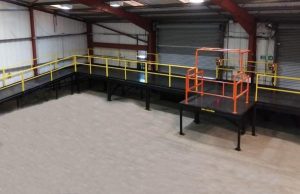Exploring the Viability of Ground-Level Loading Docks
In the world of logistics and warehouse management, the design and functionality of loading docks play a crucial role in streamlining operations and ensuring efficient movement of goods. Traditionally, loading docks have been elevated to accommodate trucks and facilitate the loading and unloading process. However, the question arises: Can a loading dock be ground level? In this article, we will delve into the considerations, advantages, and challenges associated with ground-level loading docks.
The Traditional Elevated Loading Dock
For decades, elevated loading docks have been the standard in warehouse design. These docks are raised to match the height of delivery trucks, allowing for a seamless transition of goods between the truck bed and the warehouse floor. The elevated design offers several advantages, including easier access for trucks, efficient use of space, and improved security by preventing unauthorized entry.
However, the traditional loading dock design comes with its own set of challenges. Constructing and maintaining elevated docks can be expensive, and their rigid structure may not be suitable for all warehouse configurations. Additionally, accessibility can be an issue for individuals with disabilities, requiring the installation of additional infrastructure like ramps or lifts to comply with accessibility standards.

The Rise of Ground-Level Loading Docks
In recent years, there has been a growing interest in ground-level loading docks as an alternative to the conventional elevated design. Ground-level docks are essentially at the same level as the surrounding ground, eliminating the need for ramps or lifts. This approach offers several potential benefits that cater to specific operational needs.
Advantages of Ground-Level Loading Docks
Accessibility: Ground-level loading docks provide enhanced accessibility for both personnel and equipment. They eliminate the need for ramps or lifts, making it easier for workers and forklift operators to move goods in and out of the warehouse.
Cost Savings: The construction and maintenance costs associated with ground-level loading docks are generally lower compared to elevated docks. This can be a significant factor for businesses operating on tight budgets or looking to optimize their logistics infrastructure.
Versatility: Ground-level loading docks offer more flexibility in warehouse design. They can be easily integrated into existing facilities or incorporated into unconventional layouts where elevated docks might be impractical.
Safety: The absence of elevation reduces the risk of accidents related to falls from heights, a common concern in warehouses with elevated loading docks. This can contribute to a safer working environment and potentially lower insurance costs.
Challenges and Considerations
Weather Impact: Ground-level loading docks may be more susceptible to weather conditions such as flooding, especially in areas prone to heavy rainfall. Adequate drainage systems and proper planning are essential to mitigate this risk.
Security Concerns: Ground-level docks may pose security challenges as they are more accessible to unauthorized individuals. Implementing robust security measures, such as surveillance systems and controlled access points, is crucial to address this issue.
Truck Compatibility: Ground-level loading docks may not be suitable for all types of trucks. Compatibility issues may arise, and adjustments may be needed to accommodate various truck sizes and configurations.
Spatial Requirements: While ground-level docks offer flexibility, they may require more horizontal space compared to elevated docks. Warehouse layouts must be carefully planned to ensure optimal use of available space.
Choosing the Right Solution

The decision between an elevated or ground-level loading dock ultimately depends on the specific needs and constraints of a given operation. Before making a choice, businesses should conduct a thorough analysis, taking into account factors such as the types of goods handled, frequency of deliveries, available space, budget considerations, and local regulations.
Hybrid Solutions and Innovation
In some cases, a hybrid approach that combines both elevated and ground-level docks may offer the best of both worlds. This allows businesses to leverage the advantages of each design while mitigating their respective challenges. Innovations in loading dock technology continue to emerge, providing new solutions to address the evolving needs of the logistics industry.
Conclusion
The question of whether a loading dock can be ground level has no one-size-fits-all answer. Both elevated and ground-level loading docks have their own set of advantages and challenges. It’s crucial for businesses to carefully assess their specific requirements and constraints before making a decision.
As the logistics industry continues to evolve, the choice between elevated and ground-level loading docks is likely to be influenced by factors such as technological advancements, sustainability considerations, and the ever-changing landscape of supply chain management. In the end, the key is to strike a balance that optimizes efficiency, cost-effectiveness, and safety in the warehouse environment.

Recent Comments